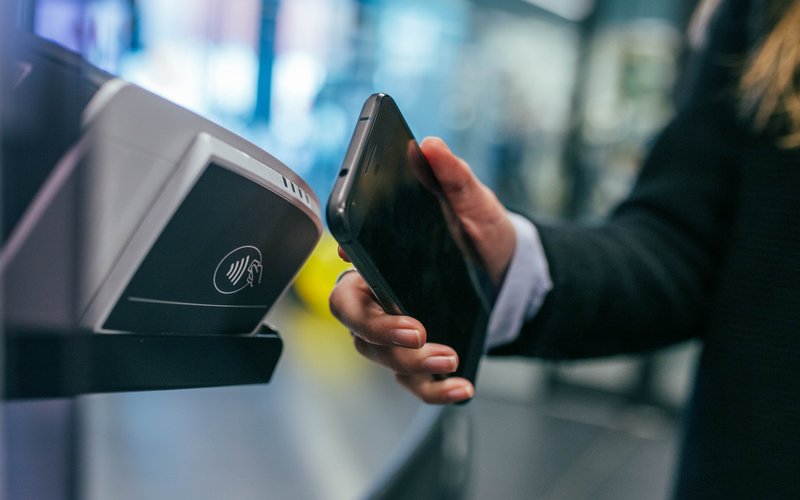After years of international travel being off the cards (thanks a lot COVID), in late 2023 I treated myself to a long overdue two-month jaunt through Europe. Travelling through Europe for that length of time can get expensive pretty quickly, so it's safe to say I've learned a thing or two about how much you need to save and how to budget for it accordingly.
Recent ING research found that the average amount Aussies think they'll need for a two-week holiday to Europe is $10,409 - but would only be willing to spend $8,866. On average, ING found it would take almost two years for Aussies to save up that much for a two-week European holiday.
Realistically, how much do you need to have saved to enjoy your European escape? Well, how long is a piece of string? Whether you plan to sip wine in the Italian countryside or enjoy the coffee shops 😉 in Amsterdam; let's discuss how much you should save for your European holiday.
Flights
This is going to be one of your biggest expenses when embarking on your European holiday. I'm only talking about your flights from Australia to Europe; not any in-between flights (we'll get to that later). No matter where you're flying off to, flights to Europe are going to cost you a pretty penny simply because of how far away we are in Australia.
The cost of a single economy return airfare from Australia to Europe can vary significantly depending on when you choose to travel and whereabouts in Europe you're travelling to (after all, it's a huge continent!). Generally, the cheapest flights are available from late October to mid-March, excluding the busy Christmas and New Year period.
As of 2024, a reasonable deal for a return airfare in March or November from Sydney to London or Melbourne to Rome is typically around $1,300 to $1,800. During peak travel times such as Easter, Christmas, and the height of the northern summer (late June to July), prices tend to rise, with a good deal on the same return flights costing around $2,200 to $2,500. For example, a flight from Brisbane to Frankfurt might cost around $1,900 in November and closer to $2,300 during the Christmas season, according to Skyscanner.
How much should you save?
When budgeting for your flights from Australia to Europe, it's wise to set aside up to $3,000 per person for a return airfare in economy class, just to be on the safe side. When I went to Europe, I paid $2,800 return and I booked well in advance, but I specifically wanted to fly with Emirates and I wanted exit row seats.
While it's possible to find cheaper options, particularly if you book well in advance or travel during off-peak seasons, prices can vary widely. Factors such as the time of the year, the destination in Europe, the airline you choose, the cabin class, seat selection, and how far in advance you book all play significant roles in determining the final cost. Prices tend to be higher during peak travel seasons such as the European summer (June to August) and around the Christmas/New Year period. Off-peak seasons generally offer cheaper airfares.
This is why you should monitor flight prices regularly and be flexible with your travel dates to secure the best possible deal.
To give you a clearer idea, here's a general guide on average prices for each cabin class on a return flight from Australia to Europe:
- Economy Class: $1,200 - $3,000 per person
- Premium Economy Class: $2,500 - $4,500 per person
- Business Class: $5,000 - $10,000 per person
- First Class: $10,000 - $20,000+ per person
Accommodation
One of the trickier parts of budgeting for a Europe trip (or any holiday really) is deciding between the accommodation you can afford and the level of comfort and privacy you're willing to compromise on. Staying in a 12-bed dorm in a hostel isn't for everyone, but we can't all afford to stay at The Ritz either.
Accommodation costs can vary enormously depending on the type of accommodation, facilities, the country, and the proximity of the accommodation to the main attractions of the city you're staying in. So how do you know how much to save when there are so many variables?
Here's a rough guide to what you can expect to pay in different parts of Europe, broken down by accommodation type.
Western Europe
Western Europe is known for its high living standards, and accommodation prices tend to reflect this, especially in major cities like London, Paris, and Amsterdam.
- Hostels: $50-$150 per night
- Mid-Range Hotels: $200-$400 per night
- Luxury Hotels: $400-$1,000+ per night
- Airbnb (Entire Place): $150-$500+ per night
Eastern Europe
Eastern Europe is generally more affordable, offering great value for travellers, particularly in countries like Poland, Hungary, and the Czech Republic.
- Hostels: $30-$100 per night
- Mid-Range Hotels: $100-$200 per night
- Luxury Hotels: $200-$500 per night
- Airbnb (Entire Place): $80-$250 per night
Northern Europe
Northern Europe, including countries like Norway, Sweden, and Denmark, is among the most expensive regions in Europe. Prices are generally high, especially in capitals like Oslo, Stockholm, and Copenhagen.
- Hostels: $70-$200 per night
- Mid-Range Hotels: $250-$500 per night
- Luxury Hotels: $500-$1,000+ per night
- Airbnb (Entire Place): $200-$600+ per night
Southern Europe
Southern Europe, which includes popular destinations like Italy, Spain, and Greece, offers a mix of affordability and luxury. Prices can vary widely depending on whether you're in a major city or a smaller town.
- Hostels: $40-$120 per night
- Mid-Range Hotels: $150-$300 per night
- Luxury Hotels: $300-$700+ per night
- Airbnb (Entire Place): $120-$400 per night
Central Europe
Central Europe, including Germany, Austria, and Switzerland, offers a range of accommodation options. While Switzerland is notably expensive, other Central European countries can be more affordable.
- Hostels: $50-$150 per night
- Mid-Range Hotels: $200-$350 per night
- Luxury Hotels: $350-$800+ per night
- Airbnb (Entire Place): $150-$450 per night
How much should you save?
Here's a general guide:
- Budget Traveler: Expect to spend $50-$150 per night.
- Mid-Range Traveler: Plan for around $150-$300 per night.
- Luxury Traveler: Set aside $300-$800+ per night.
To calculate your total accommodation budget:
- Estimate the average nightly cost: Based on your preferred type of accommodation.
- Multiply by the number of nights: This gives you a base estimate for your entire stay.
- Include a buffer: Add 10-20% to cover any unexpected price increases or last-minute changes in your plans.
For a typical two-week trip:
- Budget Traveler: Plan to spend around $700-$2,100.
- Mid-Range Traveler: Expect to budget $2,100-$4,200.
- Luxury Traveler: You might need to save between $4,200-$11,200+.
These figures are rough estimates and actual costs will depend on your personal preferences, the specific destinations, and your travel dates.
.jpg?language_id=1)
Photo by Martin Péchy via Pexels
Other travel costs
With the countries in Europe being so close together, chances are you'll do some more international travel while you're there. You're a long way from home, and it's expensive to get over to Europe, so it's definitely worth travelling to at least a few countries while you're in that part of the world.
Traveling within Europe is generally comparable in cost to domestic travel within Australia. However, prices can vary depending on the mode of transportation and the specific routes you take.
Flights within Europe
Europe is well-connected by budget airlines, making air travel between countries both convenient and relatively inexpensive. Here's a general idea of what you might expect to pay for one-way flights between major European cities:
- London to Amsterdam: $45-$100
- Amsterdam to Berlin: $60-$150
- Berlin to Paris: $50-$100
- Paris to Rome: $35-$120
- Rome to London: $35-$115
*Prices are approximate and can fluctuate based on booking time, season, and availability. Budget airlines like Ryanair and EasyJet often offer the lowest fares, but it's important to consider potential additional costs such as baggage fees.
Trains and Buses
If you prefer not to fly, Europe offers extensive and efficient train and bus networks. Travelling by train is very popular, offering scenic routes and city-center-to-city-center convenience. Buses are usually the cheapest option, but they can be much slower than trains or flights, making them ideal for shorter distances or for travelers on very tight budgets. Here's a rough estimate of train costs for the same routes:
- Amsterdam to London: From $90
- Amsterdam to Paris: From $55
- Amsterdam to Berlin: From $95
- Paris to Berlin: From $75
- Berlin to Rome: From $75 (though this journey can take up to 21 hours)
*Again, prices are approximate and depend on factors such as the time of booking, class of service, and whether you choose high-speed or regular trains.
Tourist attractions
If you travel halfway around the globe, you best believe you should see all that the cities have to offer. While you can definitely have a good time without paying to get into any attractions, many of the iconic ones will come with a price tag.
With this in mind, here are the costs of entering some of the most popular tourist attractions across Europe*.
- Eiffel Tower: €35.30 ($58.20) to go to the top
- Colosseum: €18 ($29.68)
- Louvre Museum: €22 ($36.27)
- Acropolis of Athens: €20 ($32.97)
- Palace of Versailles: €32 ($52.76)
- Anne Frank House: €16 ($26.38)
- St. Mark's Basilica: Free
- Trevi Fountain: Free
- Van Gogh Museum: €22 ($36.27)
*Prices converted from Euros to Australian Dollars and accurate at the time of writing.
How much should you save?
Visiting iconic tourist attractions is one of the highlights of getting to travel, so you should budget accordingly so you don't miss out. While some attractions are free, many of the most famous sites come with entry fees. Based on current prices, it's advisable to set aside around $30 to $60 per attraction, depending on the specific sites you wish to visit.
.jpg?language_id=1)
Image by esrageziyor via Pexels
Food and drinks
While the 'bigger' price tag will be on the travel and accommodation costs, you still have to eat (and drink - you are on holiday after all!).
Depending on how much you eat and the kinds of places you want to dine at, your food costs are going to vary. But I strongly believe it's better to err on the side of caution and budget more than you think you'll need.
As of 2024, cheaper fast food across Europe typically ranges from €10 to €18 per meal ($16-$29), while dining in a restaurant generally starts at around €20 ($32). Based on this, it's advisable to budget at least €45 to €80 per day (approximately $74 to $131) if you plan to eat out for all your meals. Eating out for every single meal quickly adds up though, and while I love a lavish dinner as much as the next person, your travel funds aren't going to go very far if you fall for every fairy light covered trattoria you come across. One of my favourite ways to get to know a place is to head to the nearest supermarket and check out the local products and produce. Buy some cheese, meats, a baguette, olives, some fruit and a bottle of wine and you've got yourself a decent little picnic lunch.
Speaking of alcohol, it's very cheap compared to Australia. In Prague, for example, a bottle of wine is equal to around $10, while a pint of beer is $3 according to Prague Czech Travel. According to Eurostat, prices of alcohol are highest in Finland, followed by Ireland and Sweden, while they were lowest in Romania, Bulgaria, and Hungary. With this in mind, budgeting for alcohol will depend on where you are, what you're drinking, and how much you're drinking.
Here's a general overview of alcohol prices across different regions of Europe as of 2024:
Western Europe
- Pint of beer: €4-€8 ($6.50-$13)
- Bottle of wine in a supermarket: €5-€15 ($8-$24)
Eastern Europe
- Pint of beer: €1.50-€3 ($2.50-$5)
- Bottle of wine in a supermarket: €3-€7 ($5-$11)
Northern Europe
- Pint of beer: €6-€10 ($10-$16)
- Bottle of wine in a supermarket: €8-€20 ($13-$32)
Southern Europe
- Pint of beer: €2-€5 ($3.20-$8)
- Bottle of wine in a supermarket: €4-€10 ($6.50-$16)
Central Europe
- Pint of beer: €3-€6 ($5-$10)
- Bottle of wine in a supermarket: €5-€12 ($8-$19)
How much should you save?
For a comfortable experience, it's generally recommended to budget around $75 to $150 per day for food and drinks, depending on your dining preferences and the destinations you're visiting. This allows for a mix of dining options, from casual eateries to nicer restaurants, and includes a modest allowance for alcohol. If you plan to incorporate supermarket shopping into your routine, you can reduce this budget, especially for breakfast and lunch.

Image by Max Avans via Pexels
Travel insurance
Another important cost when travelling that is necessary is travel insurance. Travel insurance can cover you in events like your baggage being lost, your belongings being stolen ("Attenzione pickpocket!), or getting unexpectedly sick and needing medical care. You might think 'oh, those things would never happen to me' but they absolutely can and do happen all the time.
It also just gives you some peace of mind just in case anything goes wrong. There are a few factors that can influence how much your travel insurance will cost and what you're covered for, including:
- Whether you'll be on a cruise at any point
- Whether you'll be doing any snow activities (skiing, snowboarding, etc)
- Whether you'll be renting a car
- If you're taking high value items (like photographic equipment)
- If you have pre-existing medical conditions
- Your age (older travelers face higher premiums)
- The destination
To give you an idea of how much travel insurance could cost, I generated a quote through CoverMore for a 29-year-old solo traveller going to Europe for two weeks in July. For fully comprehensive cover, the quote came to $170.
I paid $1,750 for comprehensive travel insurance for my two month trip, though I did tack on snow sports cover and adventure cover and also had to pay extra for underlying medical conditions.
Prices can vary widely based on the factors mentioned above. It's always a good idea to get multiple quotes from different insurers, carefully read the Product Disclosure Statement (PDS), and pay attention to the excess amounts and exclusions.
How much should you save?
For most travelers, it's advisable to budget around $150 to $300 for travel insurance for a typical two-week trip. This amount should provide you with comprehensive coverage, offering peace of mind that you're protected against the unexpected. However, the exact amount you'll need to save will depend on factors like the nature of your trip, your destination, and any specific needs you have. It's always a good idea to shop around, compare quotes, and choose a policy that best fits your individual circumstances. And remember - if you can't afford travel insurance, you can't afford to travel!
Home expenses: Keeping up with the mortgage
Though less entertaining than watching the trainwreck that is Keeping up with the Kardashians, keeping up with your mortgage or rent payments is another expense that needs to be factored into your budget while you're away. These ongoing expenses can easily be overlooked in the excitement of planning a trip but are crucial to factor into your budget to avoid any financial strain.
In addition to your mortgage or rent, you'll need to account for other regular bills and commitments, such as:
- Utilities (water, gas, electricity, internet)
- Insurance premiums (home, contents, health insurance)
- Subscription services (e.g., Netflix, Spotify)
- Loan or credit card repayments
- Gym memberships and other ongoing services
You should tally up all your weekly/monthly expenses and account for these in your budget to make sure you're not putting any financial strain on your getaway. It's also a good idea to put a little extra money into your emergency fund, just in case something goes wrong and you need some quick cash.
Depending on how long you're going to be away for, it could even be worth cancelling or pausing some of these costs, such as your Netflix subscription or gym membership which is what I ended up doing as I was away for such a long time.
How much should you save?
To ensure that your home expenses are covered while you're on holiday, it's important to calculate the total amount you'll need to set aside. Start by adding up all your regular weekly or monthly expenses, including your mortgage or rent, utilities, insurance premiums, subscription services, and any other recurring payments.
Once you have a clear picture of these costs, factor in the duration of your trip to determine the total amount needed to keep up with these commitments while you're away. Additionally, consider adding a buffer to your savings for unexpected expenses, such as emergency repairs or unplanned bills that might arise.
If you're taking annual leave for the duration of your trip you probably don't really need to worry about setting aside extra cash to cover all your regular expenses as that will just come out of your regular pay as per usual.
Recreational spending money
On top of everything else we've mentioned, you still want some extra pocket money to spend on things like souvenirs, clothes, shoes and so on. After all, you don't want to find yourself strolling down the Avenues des Champs-Elysées without any money to indulge in a little shopping.
When it comes to how much recreational spending money to take with you, foreign exchange platform S Money said it's 'virtually impossible' to know how much you might need, but they did provide this as a rough guide:
One week in Europe
Between €700 and €1,700 ($1,154-$2,800)
Two weeks in Europe
Between €2,500 to €3,400 ($4,122-$5,606)
One month in Europe
Between €5,000 to €10,000 ($8,244-$16,488)
These are just rough estimates to give you a guide to help plan your trip, but it's a good idea to adjust based on your specific travel style and preferences.
.jpg?language_id=1)
Image by Laura Rodríguez via Pexels
So how much should you save to travel to Europe?
Ultimately, how much you end up needing to save and spend will completely come down to you; where you go, how you get there, and where you stay. If you want to travel on a budget, hostels and Ryanair's last-minute deals might be the way to go. But if you want to stay in nice hotels, see the attractions that cost money and do a bit of shopping, you may need to save a little more.
For a typical two-week trip, you might need to budget between $8,000 to $12,000, which covers your flights, accommodation, daily food and drink expenses, additional costs like travel insurance, and recreational spending.
If you plan on staying longer, such as a month, your savings should reflect the increased costs, potentially reaching $20,000 or more depending on your choices and travel destinations.
My two month trip through Europe ended up costing me $30k which included flights, accommodation, the two Topdeck tours I did, travel insurance, tourist attractions, skiing and paragliding, food and drink (including a $1k case of Tuscan wine!!), and spending money - and I came back with $5k to spare. I was also fortunate enough to have loads of annual leave saved up so I was still getting paid my regular fortnightly wage while I was away, so I didn't need to worry about how I was going to afford all my usual expenses like rent and bills back home.
Ultimately, Europe is a massive continent with over 44 countries, and prices across them vary wildly, so the amount you need to save will depend greatly on your specific itinerary, travel preferences, and the experiences you want to have. Hopefully these figures have provided a helpful starting point as you plan and budget for your Euro trip.
Related reading: Tips on saving for your next holiday
Tips for planning your Europe trip
- Compare flights across multiple dates: Some days are cheaper to fly than others. Do your research to find the best times to fly and work out your holiday around these dates.
- Use multiple comparison sites to look for hotels: Some comparison sites will charge you a higher fee than others for the exact same hotel. Make sure you look around to find the best deal.
- Same goes for travel insurance: You should also use multiple sites to compare your travel insurance quotes. Also be sure to read the PDS and know exactly what you're covered for (and what you're not!), and that you're going through a reputable, reliable insurance company.
- Don't forget the free spots: Most European cities have a lot to offer that you don't even need to pay for. Iconic tourist spots like the Eiffel Tower and London Bridge won't cost you a cent to look at, and they're great to see. There are also plenty of free walking tours to get your bearings of the city (but it's polite to tip).
- Saving too much is better than not saving enough: You may think $150 per day for food and drinks is excessive, and chances are, you're right. You likely won't spend this much every single day on food, drinks and recreational activities. But it's better to come back from your trip with money to spare than run out while you're away.
- Account for exchanging Australian Dollars to Euros: Plan on losing a little bit of money when exchanging your Australian Dollars to Euros. Whether you take out cash or use a travel credit card, there will be a tiny fee incurred whenever you exchange money which you should take into consideration. Read more: Is it a good idea to travel overseas with a weak Aussie dollar?
- Head east: There's so much more to Europe than the well-trodden London, Paris and Rome. Hungary, Albania, Romania, Poland, Czech Republic and Bulgaria are also part of Europe and often overlooked - but these eastern countries tend to be a lot cheaper than their western counterparts and have just as much to offer. Budapest ended up being one of my favourite cities I've ever visited.
- Utilise the public transport: Navigating the public transport system in a foreign country where English isn't the first language is terrifying the first time you do it, but once you do figure it out (and it's really not that hard) you'll be able to conquer anything.
- Don't forget to get your ETIAS before you go: From early 2025, visitors from 50+ nations, including Australia and New Zealand, will require an ETIAS to enter any of the Schengen area countries in 2025. It will only cost you $12 and you can apply online. Essentially, it's just a travel authorisation that will be linked to your passport and valid for up to three years or until the passport expires, whichever comes first.
.jpg)


 Denise Raward
Denise Raward

 Harry O'Sullivan
Harry O'Sullivan
 Emma Duffy
Emma Duffy
 William Jolly
William Jolly

